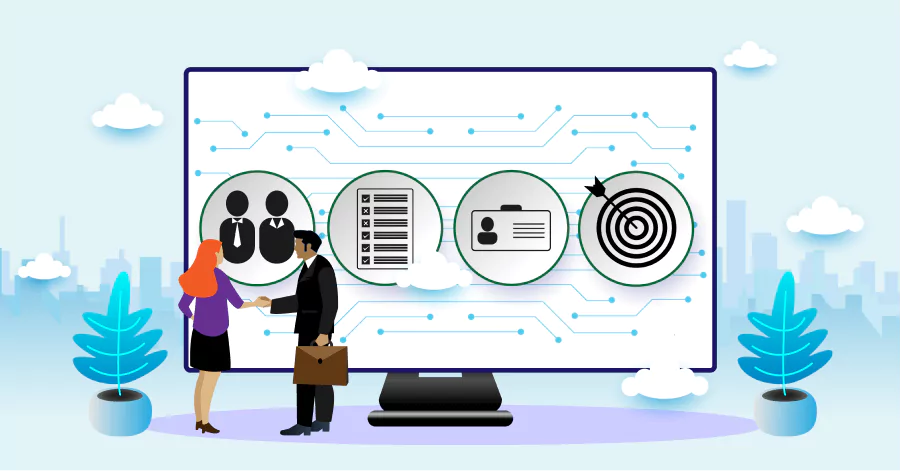The IT labor market is growing at a steady rate and is projected to reach a 15% growth by 2031. Along with it, the demand for IT staff augmentation is on the rise. A growing number of businesses are considering bringing on remote employees to accelerate the software development process and address specific needs and requirements.
As staff augmentation is gaining more popularity, it’s becoming significantly more important to adopt successful practices of working with remote tech talent. One of them is new employee onboarding.
Discover what the onboarding process is, whether it’s relevant if you use staff augmentation, and what the best practices for onboarding augmented staff are.
Does Staff Augmentation Need Proper Employee Onboarding?
It might seem counterintuitive at first to spend any significant effort to onboard external staff that may have a temporary or limited scope. So, do you really need to invest time and resources into onboarding augmented employees? After all, they’ll only remain with your company for a limited amount of time.
Despite the fact that staff augmentation is a temporary outsourcing model, an onboarding process can reduce stress, boost productivity, accelerate progress, and increase the chances of a successful project outcome. Studies also suggest that effective onboarding can improve productivity by at least 70% and engages employees from day one.
Luckily, in the case of staff augmentation, new employee onboarding isn’t as involved as when hiring full-time employees, nor is it as time- and resource-consuming. A few simple steps can help you start your business partnership off right.
6 Steps of a Successful Staff Augmentation Employee Onboarding Process
1. Communicate Clear Expectations
Nothing sinks a professional engagement faster than unclear expectations. Before contracting a staff augmentation provider and bringing on new developers to your team, you need to get clear on what your expectations for this partnership are.
Here are a few details that you need to consider:
- What do you expect to accomplish with augmented staff?
- How many hours would you like them to work each week?
- How long do you expect the engagement to last?
- What skills and previous experiences are important for your project?
- What tools and technologies will be used throughout the process?
- How many developers do you want to contract?
- Is any other staff required for this project? E.g. analysts, UI/UX designers.
- What are their responsibilities going to be?
Sharing your needs and expectations with your staff augmentation provider will help them suggest the best-suited talent for your project, whereas communicating with remote tech talent will help them start and complete work on your project successfully and within the expected budget and time constraints.

2. Communicate Before Augmented Staff Begins Work
Once your staff augmentation provider selects relevant candidates for your software development project, you’ll be able to conduct interviews with them. However, many companies and hiring managers make the mistake of stopping here.
Almost 90% of new employees reveal that they expect to meet their new manager during their first day on the job. In addition to feeling welcome, meeting the manager improves the rate of collaboration and meeting quality. Research suggests that new employees who meet their manager one-on-one, spend up to three times more time collaborating with the rest of the team and have more productive meetings.
Since your augmented staff will be working as part of your existing IT team, treat them as if they were full members of your staff. Connect with them via email before they begin work. If you aren’t the one managing the project, but, instead, have a dedicated project manager who oversees progress and workflows, instruct them to get in touch with the new recruits.
This way, augmented staff will have a contact person whom they can reach out to in case of doubts and questions that may arise during their first days on the job.
3. Welcome and Introduce New Members
As part of the onboarding process, 83% of new hires expect to be introduced to their colleagues on the first day. Make sure to do so even with temporary staff, especially since they work remotely.
To do this, introduce augmented staff to their team members in your communication channels. This can signal that they are valued and respected, thus boosting their morale.
4. Provide the Necessary Access
Part of the reason that staff augmentation is a popular choice is because of how quickly you can integrate additional help into your workflow. However, what usually sabotages this rapidness is any unexpected delays in getting the necessary access/training of internal software tools. While normal new employee onboarding should involve training them in your organizational culture and workflows, such training is usually minimal with augmented staff because they typically get hired for specific tasks or due to specialized skills.
Therefore, you should ensure that your augmented staff has access to all the tools and technologies necessary for them to perform their tasks, access workflows and information on milestones and deadlines, as well as communicate with your in-house team. This will enable them to start fulfilling their duties from day one.
5. Continuously Integrate Augmented Staff
According to HR experts, new, full-time employee onboarding is fairly involved and can take up to three months. In some organizations, it might be up to a year—if not longer.
With staff augmentation, you can onboard new team members within two weeks, if not less. As you bring on new team members for short-term projects, the onboarding process doesn’t need to be as long or as involved.
Nevertheless, your in-house team and your augmented staff should be working as a single unit, and your new recruits should feel like a part of your internal IT team rather than an extension of it.
To accomplish that, involve augmented staff in meetings, communication, and the decision-making process, as long as, of course, it’s relevant to your project and its responsibilities. Remain professional yet friendly, and don’t be afraid to respectfully inquire about their interest, culture, local events, and similar topics.
If you recruit remote tech talent from other countries and cultures, it can be beneficial to look up basic information on them to ensure that you and your team don’t accidentally offend or insult them.
Overall, your business and project outcomes can highly benefit from making your remote staff feel welcome and integrated.

6. Monitor Performance and Provide Constructive Feedback
Feedback loops are usually among the last items for consideration in staff augmentation, but it is actually critical for success. As with any new employee, it’s vital that you know they’re working on your projects the way you need them to. It’s too easy to “drown in the weeds” otherwise.
So, once your remote staff has integrated into your team and workflows, keep track of their work and performance to assess how well they have understood project expectations and requirements. This will help detect and address any potential issues early on.
Additionally, provide and encourage constructive feedback to foster a strong, collaborative relationship between you, your in-house IT team, and your remote employees.
Let Sphere Partners Assist You with Your Staff Augmentation Needs
If you need external help with a development project, Sphere Partners can help. In over 15 years, we’ve helped a wide range of businesses, including world-class companies like Groupon and CreditNinja, with their staff augmentation needs. We focus on effective communication and assist you throughout the new employee onboarding process.
We’re confident that our expertly-vetted staff can help you achieve your software development goals while respecting your timelines and budget requirements. Reach out to us to get started.





